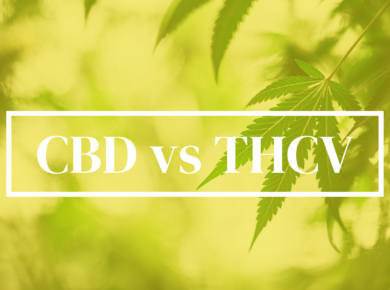Male and Female cannabis plants may look similar from afar, but there are some major differences. Both physically and physiologically.
How to Spot the Difference Between Male and Female Cannabis Plants
Both male and female plants look nearly identical, but there are some obvious differences. During the preflowering stage, 4-8 weeks from a seed, the plant’s reproductive organs begin to reveal themselves.
Cannabis plant’s reproductive organs are located in the space where a branch or leaf meets the main bunch or stalk. This location is called the internode.

Even though the plant will start to develop reproductive organs at this stage, it may be hard to determine a plant’s sex with 100% accuracy. If you cannot determine what sex your plant is this early stage, you are not alone. Luckily, you have some time before these organs become active. Wait a few more weeks until you can decide what sex they are.
How to Identify a Male Cannabis Plant
In males, small round pollen sacs will form. These seed-like balls form in the internode and are where the plants pollen comes from. Since cannabis is pollinated through open air pollination, these sacs will eventually rupture. When they do, they send pollen sailing through the air, hopefully to land on a female plants pistils and start seed production. Male plants typically produce little to no flowers and have a lower content of THC on average.
How to Identify a Female Cannabis Plant
Within the female plants internodes, small bracts or pear shape nodes begin to form. These eventually will produce two hairlike strands called pistils.
Pistils are what catch the male plants pollen and where seed production will begin to form. Female plants produce flower and have higher CBD and THC content on average than males. Female plants are prefered over males in terms of bud and cannabinoid collection.
How to Identify Hermaphrodite Cannabis Plants
Occasionally, female plant become stressed and can self pollinate. These plants produce both male and female reproductive organs. This allows them to transfer pollen within itself to produce seed and further the species. This is how many “feminized” seeds are cultivated.
The plant can become stressed in a number of ways. This includes, under-watering, over-watering, mineral deficiencies, too much or too little UV light, wind burn, bacterial disease, insect infestation, as well as too much heat or cold. To prevent this be sure to monitor your plants and keep them in a well ventilated room, with well drained soil and proper UV light.
How to Prepare Your Grow Space
Some growers in search of high performance buds remove all the male plants from the grow room to prevent a transfer of energy. Once the pollen sac ruptures, and females are pollinated, they will convert all the energy that would have gone to flower production into seed production. This makes for a lower cannabinoid concentration in the buds and low yield if this is your end goal for harvest time.
However, seed production is still very important as cannabis and hemp are both annual plants. This mean they grow from seed, flower, and die all within a year. Where as perennial plants like trees grow from a seed and have many years of fruit or crop production throughout their life. This is why hemp/cannabis seeds are still very valuable and are becoming more of a mainstream crop.
These seeds are sought out not only for cannabis growers and hybridization, but also for the food industry. More and more frequently, hemp seeds are being used in kitchens and restaurants across the world for their high protein and fat content. They add a little more nutrition to each plate or smoothy.
Whatever your harvesting goals are, the ability to tell the male and female plants apart can go a long way.




